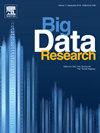Multi-dimensional feature learning for visible-infrared person re-identification
IF 4.2
3区 计算机科学
Q2 COMPUTER SCIENCE, ARTIFICIAL INTELLIGENCE
引用次数: 0
Abstract
Visible-infrared person re-identification (VI-ReID) is a challenging task due to significant differences between modalities and feature representation of visible and infrared images. The primary goal of current VI-ReID is to reduce discrepancies between modalities. However, existing research primarily focuses on learning modality-invariant features. Due to significant modality differences, it is challenging to learn an effectively common feature space. Moreover, the intra-modality differences have not been well addressed. Therefore, a novel multi-dimensional feature learning network (MFLNet) is proposed in this paper to tackle the inherent challenges of intra-modality and inter-modality differences in VI-ReID. Specifically, to effectively address intra-modality variations, we employ the random local shear (RLS) augmentation, which accurately simulates viewpoint and posture changes. This augmentation can be seamlessly incorporated into other methods without modifying the network or parameters. Additionally, we integrate the multi-dimensional information mining (MIM) module to extract discriminative features and bridge the gap between modalities. Moreover, the cyclical smoothing focal (CSF) loss is introduced to prioritize challenging samples during training, thereby enhancing the ReID performance. Finally, the experimental results indicate that the proposed MFLNet outperforms other VI-ReID approaches on the SYSU-MM01, RegDB and LLCM datasets.
基于多维特征学习的可见-红外人物再识别
由于可见和红外图像的模态和特征表示存在显著差异,可见-红外人物再识别(VI-ReID)是一项具有挑战性的任务。当前VI-ReID的主要目标是减少模式之间的差异。然而,现有的研究主要集中在模态不变特征的学习上。由于存在显著的模态差异,学习有效的公共特征空间具有挑战性。此外,模态内的差异还没有得到很好的解决。因此,本文提出了一种新的多维特征学习网络(MFLNet)来解决VI-ReID中模态内和模态间差异的固有挑战。具体来说,为了有效地解决模态内的变化,我们采用了随机局部剪切(RLS)增强,它准确地模拟了视点和姿态的变化。这种增强可以无缝地集成到其他方法中,而无需修改网络或参数。此外,我们还集成了多维信息挖掘(MIM)模块来提取判别特征并弥合模式之间的差距。此外,引入周期性平滑焦点(CSF)损失,在训练过程中优先考虑具有挑战性的样本,从而提高ReID性能。最后,实验结果表明,在SYSU-MM01、RegDB和LLCM数据集上,所提出的MFLNet优于其他VI-ReID方法。
本文章由计算机程序翻译,如有差异,请以英文原文为准。
求助全文
约1分钟内获得全文
求助全文
来源期刊

Big Data Research
Computer Science-Computer Science Applications
CiteScore
8.40
自引率
3.00%
发文量
0
期刊介绍:
The journal aims to promote and communicate advances in big data research by providing a fast and high quality forum for researchers, practitioners and policy makers from the very many different communities working on, and with, this topic.
The journal will accept papers on foundational aspects in dealing with big data, as well as papers on specific Platforms and Technologies used to deal with big data. To promote Data Science and interdisciplinary collaboration between fields, and to showcase the benefits of data driven research, papers demonstrating applications of big data in domains as diverse as Geoscience, Social Web, Finance, e-Commerce, Health Care, Environment and Climate, Physics and Astronomy, Chemistry, life sciences and drug discovery, digital libraries and scientific publications, security and government will also be considered. Occasionally the journal may publish whitepapers on policies, standards and best practices.
 求助内容:
求助内容: 应助结果提醒方式:
应助结果提醒方式:


